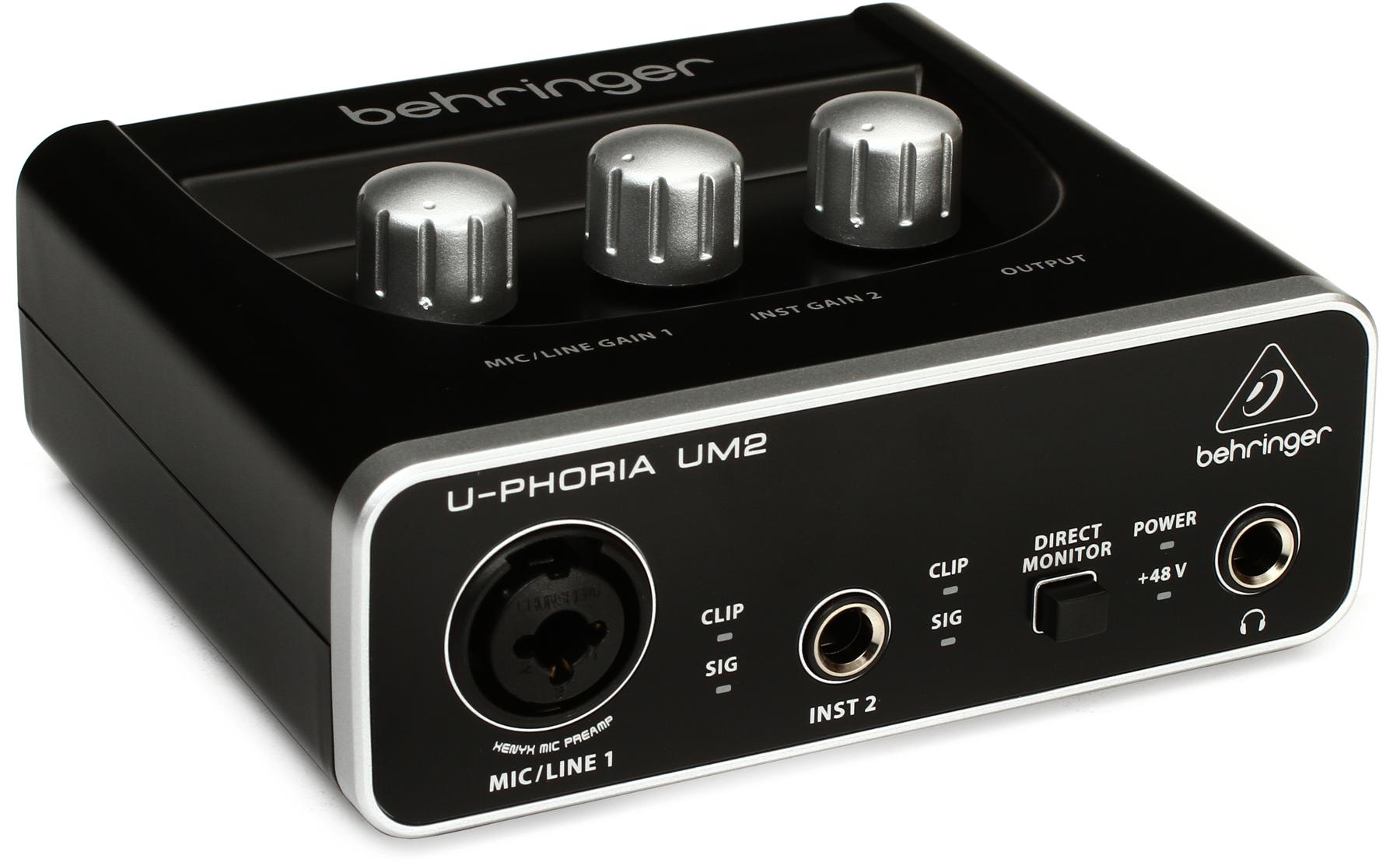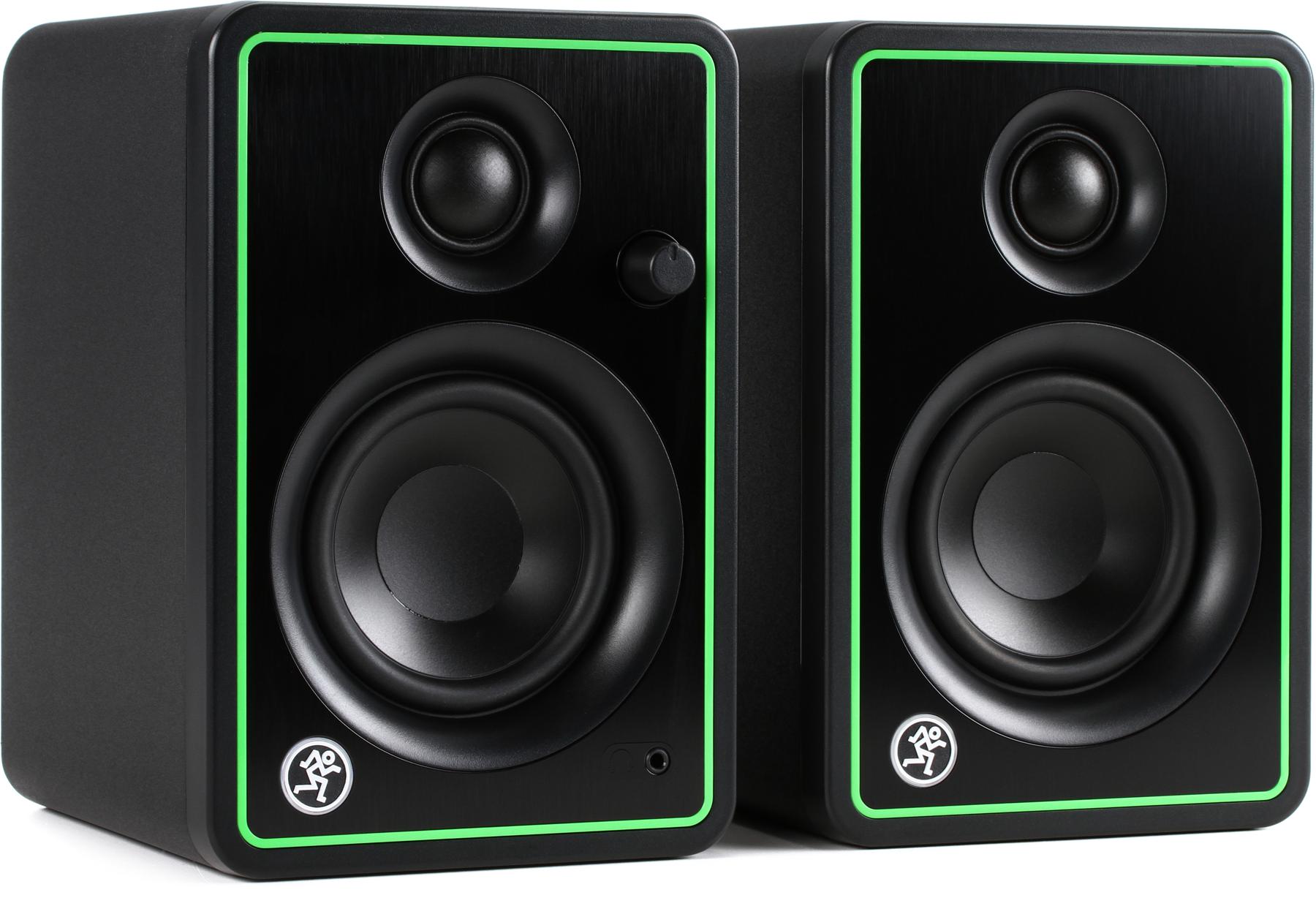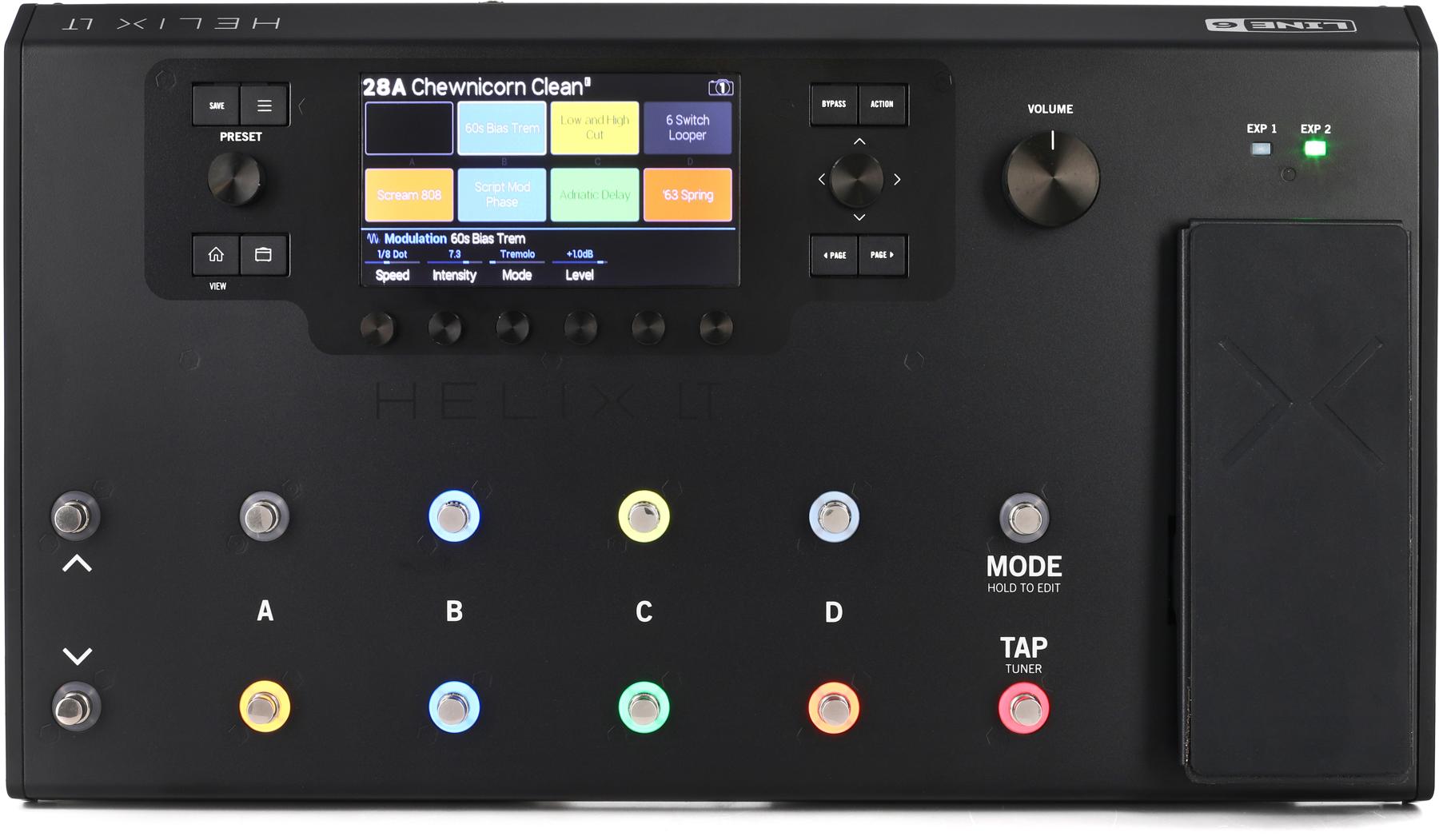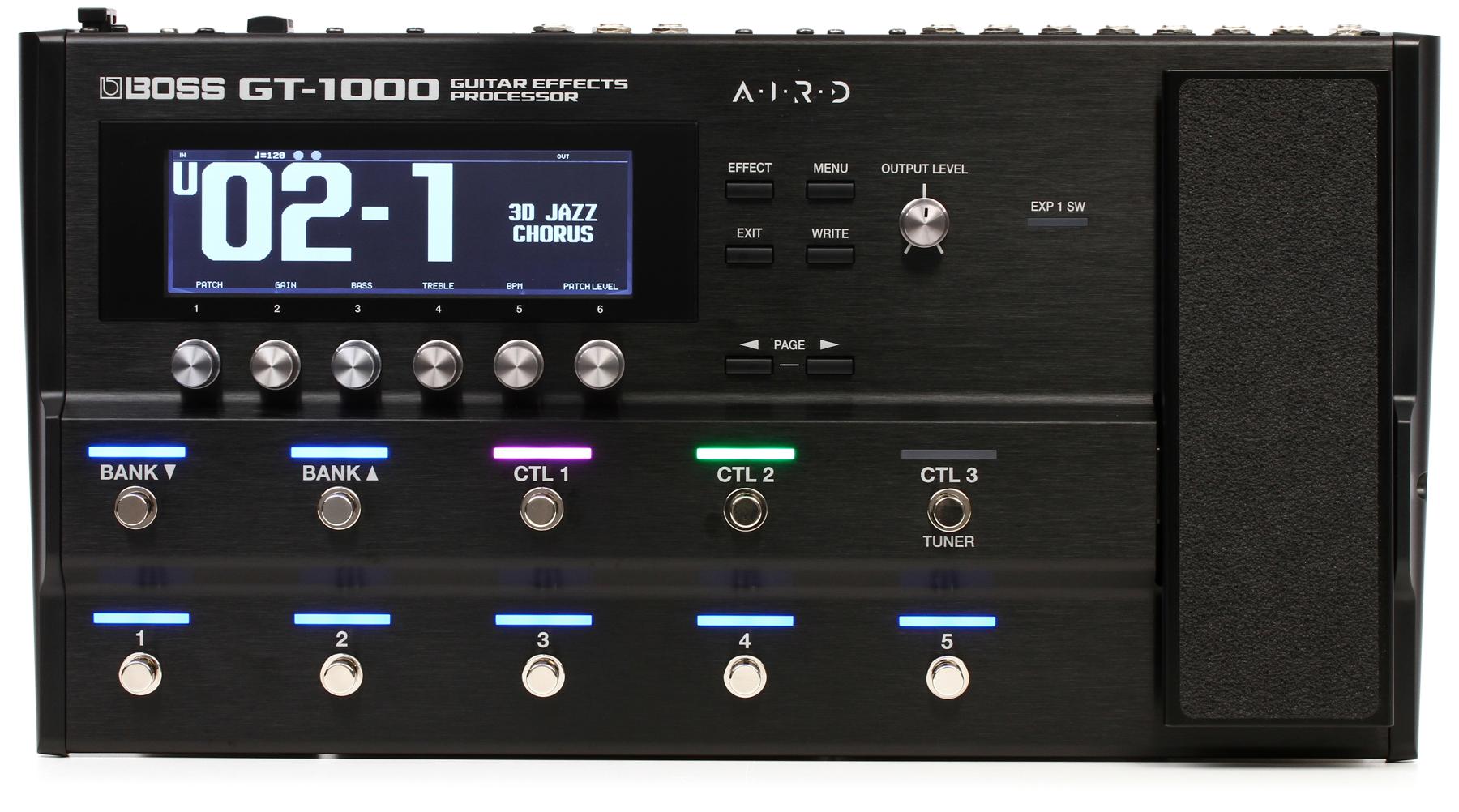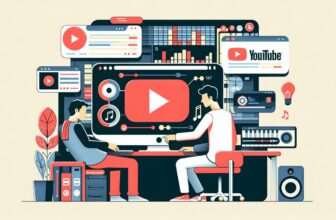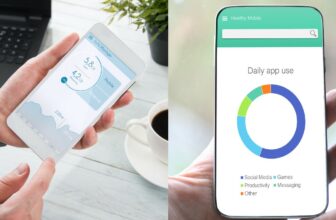How to Record Your Guitar to PC and Mac
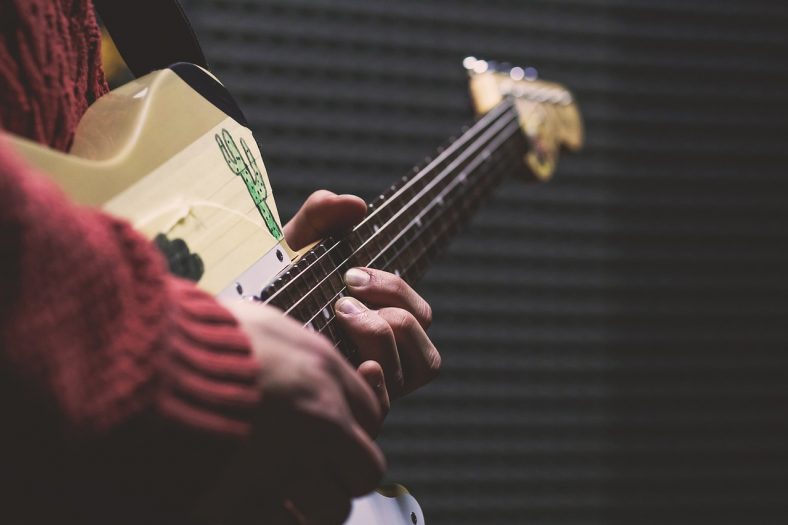
There are a few different ways to record your guitar to your computer. If your guitar has pickups (like an electric or electro-acoustic guitar) then you can “direct record” directly into an audio interface. Alternatively, you can use microphones to record the sound coming from your amp or guitar.
If your priorities are affordability and simplicity, direct recording is something anyone can afford. On the other hand, getting a good microphone and the rest of the gear for a studio recording isn’t really a particularly big investment anymore and is quite affordable in today’s market. Here is a quick explanation of the most common ways of guitar recording:
Contents
Direct Recording
Direct recording is the easiest and cheapest way to record your guitar. Besides a guitar, you need a few more pieces of hardware and software. When it comes to hardware, you will need a computer, audio interface, cables, and studio monitors or headphones.
For software, you need a decent digital audio workstation or DAW as it is commonly called, as well as some guitar plugins to make your guitar sound better. Many of these products can be found for free but if you have very high standards and expectations, you will probably have to invest in some higher-quality components.
Computer
I’m pretty sure that any decent computer would do the job. Practically, you need a machine that has enough memory to run DAWs and plugins and in most cases, these programs don’t have particularly high system requirements.
Whether it’s about Windows or Mac, things will be just fine. Both platforms are very good and you won’t go wrong with any of them. On one hand, Mac is probably more intuitive and easier to use. On the other, Windows is great in terms of overall usability. It supports virtually every piece of audio software. Windows are also the more affordable option of the two. DAW
A digital audio workstation (DAW) is arguably the most important tool that you need for music production. It is a piece of software that you will use for recording, editing, and producing music and a great thing to know is that there are endless options.
Of course, the best scenario is to get a professional-grade DAW, but keep in mind that such products cost hundreds, if not thousands of dollars. However, guitar recording isn’t such a complex thing and there are many free daws that would do the job just fine.
For those who use the Windows platform, Cakewalk offers incredible value to users because of the wide range of choices it provides for free. On the other hand, GarageBand is the most popular choice among Mac users. DAWs like Waveform Free are a great choice for Linux, but PC and Mac users will find it great too.
Audio Interface
You need hardware that connects the guitar and computer and that’s what the audio interface does. Its main function is to turn the analog signal of your guitar into a digital signal, which can later be recorded and manipulated by using a DAW.
One of the benefits of t recording a guitar is that you don’t need a super-expensive, professional-grade audio interface with dozens of inputs and outputs. You need a small and simple unit with no more than a couple of inputs and outputs, as well as a USB connection, as that’s the easiest way to connect it with a computer. Furthermore, you need a connection for headphones and monitors, so you can hear what you are playing.
Another good thing to know is that these compact audio interfaces aren’t a big investment. Moreover, models like Behringer U-PHORIA UM2 are super-affordable and will do the job just fine.
Audio Cables
Of course, you need a pair of cables to connect all the hardware. The first one is a typical 1/4- inch guitar cable but make sure to get a good quality one. This piece of gear often gets overlooked but a good signal transmission is crucial for superior recording quality. Products like George L’s 155 offer a good value for money.
The second cable you need is the one that connects the audio interface with a computer. Here, you have two choices. You can use typical 1/8-inch audio cables or use a USB connection, which seems more convenient these days.
Studio Monitors or Headphones
Naturally, you want to hear what you are recording which brings us to the importance of a pair of studio monitors. These come at an extremely wide price range. Professional units cost hundreds or even thousands of dollars but if you don’t want such an investment, entry-level products like Mackie Studio Monitor CR3 would do just fine.
You can also use headphones. Keep in mind that you need studio headphones. No matter how hi-fi a regular set of consumer headphones are, they are generally not ideal for recording because they don’t have a neutral response designed to monitor your recording.
Guitar Plugins
Once you’ve connected all the units from the previous paragraphs, you can start recording. However, the sound you’ll get from this setup won’t impress you at all. It is a simple dry signal that comes from your guitar, which is nowhere near the sound you would get from a guitar amp. You need a good guitar plugin, which allows you to manipulate the sound.
So, you need to find a plugin that’s compatible with your DAW. Most of them are and most of them come with lots of sound tweaking options, with emulations of popular guitar amps, pedals, etc. However, these are usually paid plugins, like AmpliTube . Free options can be found too. Ignite Amps Emissary and LePou Amp Pack free plugins sound fine.
Recording Using a Mic and an Amp
Direct guitar recording is a highly convenient tool but they don’t always meet your expectations regarding sound quality. You might be better off sticking to the good old method of micing a guitar amp. This is a more complicated way of recording, but the results will be far more superior and definitely worth the extra effort.
Just like direct recording, this method also requires an audio interface, DAW, cables, and, of course, a computer. The rest of the setup is a little bit different. You need a microphone, as well as a complete guitar setup, which includes guitar, amp, pedals, etc.
We can divide all these pieces into two groups. The first one is your guitar setup, which is basically the same as when you’re playing gigs. The second group includes a microphone, audio interface, DAW, and a computer. Basically, a microphone is the only additional piece of gear you need for this method of recording.
Microphones
If you want to catch a high-quality amp tone, you need a good microphone. Fortunately, the market is huge these days and anyone can find a good one, no matter the budget. What’s also important is that you need to determine what type of microphone you want – Dynamic Mic, Condenser Mic, or Ribbon Mic?
These are the three most common microphone types and each one works in a different way (I won’t bother you with details now). Each one also provides different tonal characteristics. Dynamic microphones are the most common type and their main strength is durability, while Condenser microphones are sensitive and pick details way better. Tone-wise, Ribbon microphones are a bit of both worlds.
That’s not all. It is also important to keep in mind polar patterns. Some microphones pick sounds from all directions, while others pick sound at the front only. The latter usually uses a cardioid polar pattern and that’s the kind of microphone you want, the one that captures your amp’s tone only.
Most guitar players use dynamic microphones for their amps, with a cardioid polar pattern, of course. You can read more about the differences between dynamic and condenser microphones here.
Direct Recording vs Guitar Amp Recording
It is hard to give a straight answer as both methods have advantages and disadvantages over each other. Also, it depends on your preferences and expectations a lot.
On one hand, direct recording is more convenient, especially for beginners. You will spend less money, while the whole setup is quite simple. This way of recording is cheaper in one more way – you don’t need a lot of gear, in terms of amps, pedals, etc.
On the other hand, recording with a microphone brings clear victory in terms of sound quality. There are so many parameters that need to be set up. It requires a lot of experience – finding a perfect microphone position has always been a challenge, even for experienced players.
Long story short – direct recording is probably better for beginners, while more experienced players will probably prefer the tone quality that comes with microphone recording.
Modeling Amps and Multi-Effect Processors – A Sweet Spot?
Both ways of guitar recording work well but this method probably beats both of them. With the advance of modern technologies, modeling amps and multi-effect processors have become impressive pieces of gear, which cover a lot of things. Not only do you get an impressive range of quality tones, but you also get a full pack of connectivity features, which turns these units into serious recording tools.
For example, most of today’s multi-effect processors come with a built-in audio interface, as well as a USB port. All you need is a USB cable to connect with your computer and a DAW to start recording. That’s way more convenient compared to microphone recording. At the same time, these units sound way better than guitar plugins.
Moreover, some high-end products like Line 6 Helix or Boss GT-1000 come with sound quality and they are pretty much at par with high-quality tube amps, so good that even the most experienced players can’t tell the difference.
The main difference between modeling amps and multi-effect processors is that the first ones come with built-in speaker(s). In the case of multi-effect processors, you will need monitors or headphones.
Recording Acoustic Guitars
Acoustic guitars don’t give you the luxury of choosing between the two aforementioned methods of recording. The only way you can capture the sound is to use a microphone. The principle is pretty much the same as in the case of amp recording, but there are a few differences that are good to know.
To record an acoustic guitar, you need a good microphone, audio interface, DAW, computer, and cables.
What Kind of a Microphone Do You Need?
This is the main difference compared to amp recording. Acoustic guitars aren’t as loud and that allows the use of microphones that can capture more details. So, instead of dynamic mics, you can use Condenser microphones because they work better with acoustic guitars.
This kind of microphone uses a capacitor, which is far more sensitive and allows the player to manipulate volume in a much better way. Acoustic guitars also allow the use of different polar patterns. As the sound resonates through the whole room, you can play with omnidirectional mics and capture some elements of your room’s atmosphere.
What About Acoustic-Electric Guitars?
Electro-acoustic guitars are acoustic guitars equipped with a microphone or a pickup. Such a design allows you to use an audio interface and record in the same way you record electric guitars. In other words, you have three choices in this case. First, you can record with a microphone, just like a standard guitar. The second method is to record directly. Finally, you can plug your acoustic-electric guitar into an amp and record the amp with a microphone.
Home Studio Packages
Now that you know what you need for guitar recording, the only thing left to do is to buy all the pieces you need. You may already have some of these pieces but if you don’t, buying a package that includes the whole bundle may be a good way to save money.
These home studio packages are primarily designed for beginners and their price is usually quite affordable. I recommend the Behringer U-PHORIA UMC204HD Deluxe Bundle because you get everything you need at a bargain price and the overall quality is more than satisfying.
Conclusion
As you can see, guitar recording isn’t an expensive hobby anymore. Everyone can afford one of these methods and start making music. Of course, it’s up to you to determine your budget, expectations, and ambitions. Once you do that, you will easily find what you need.

